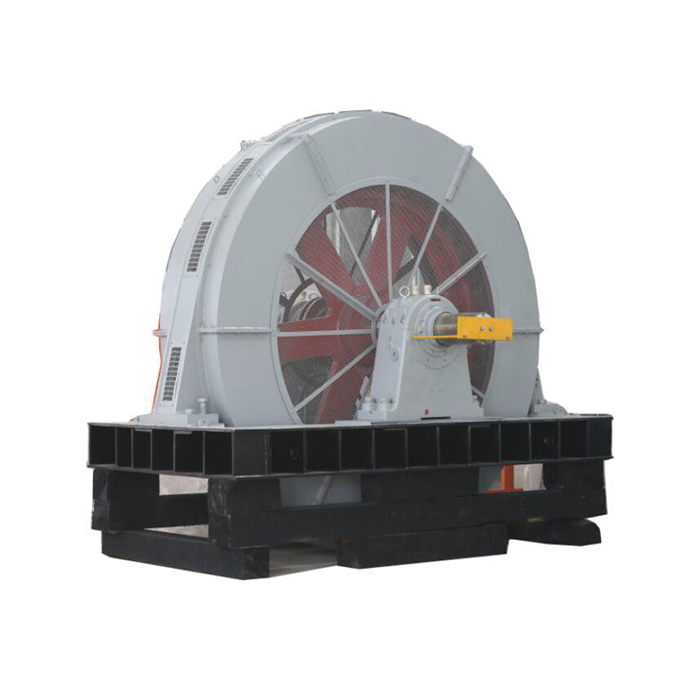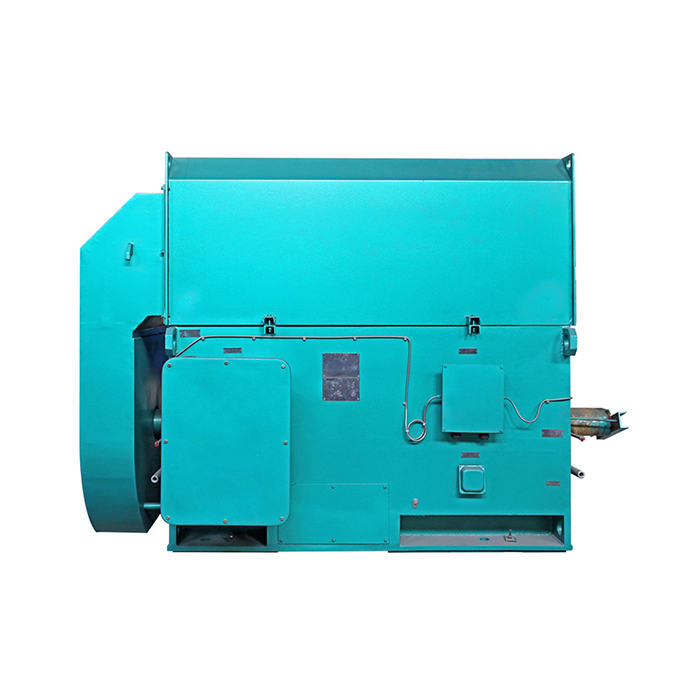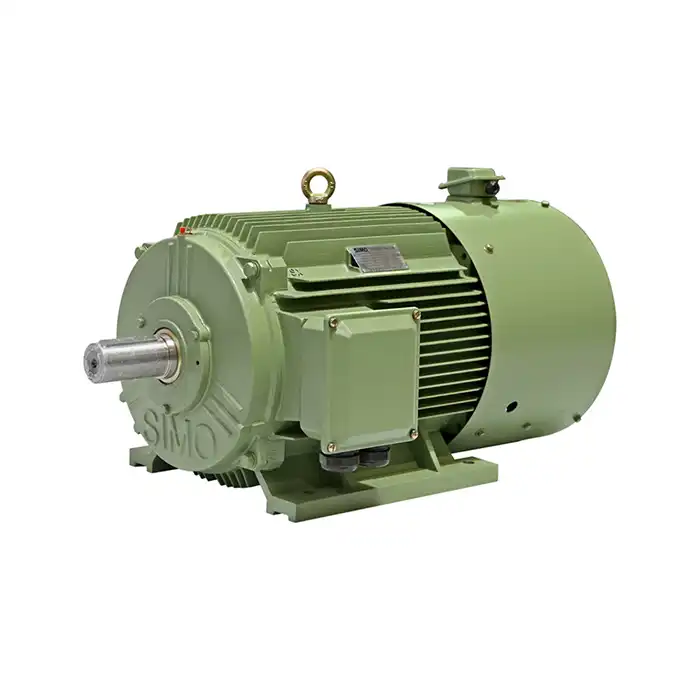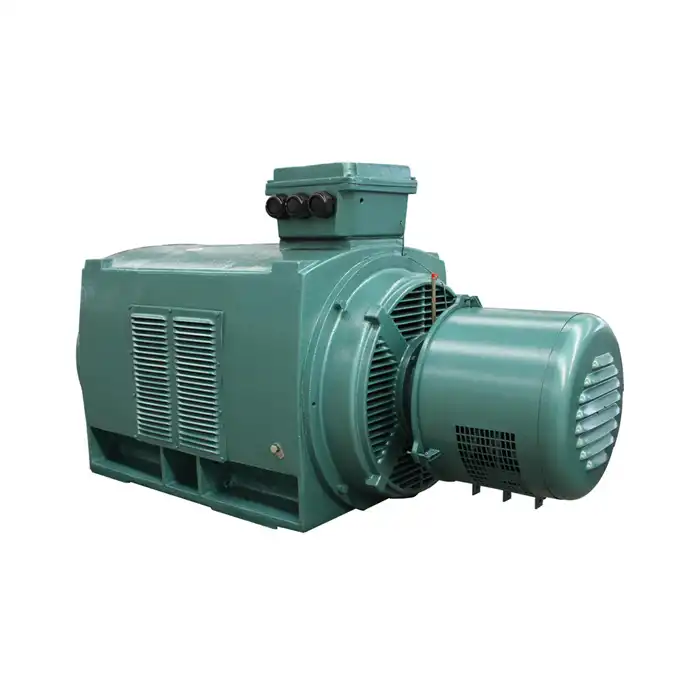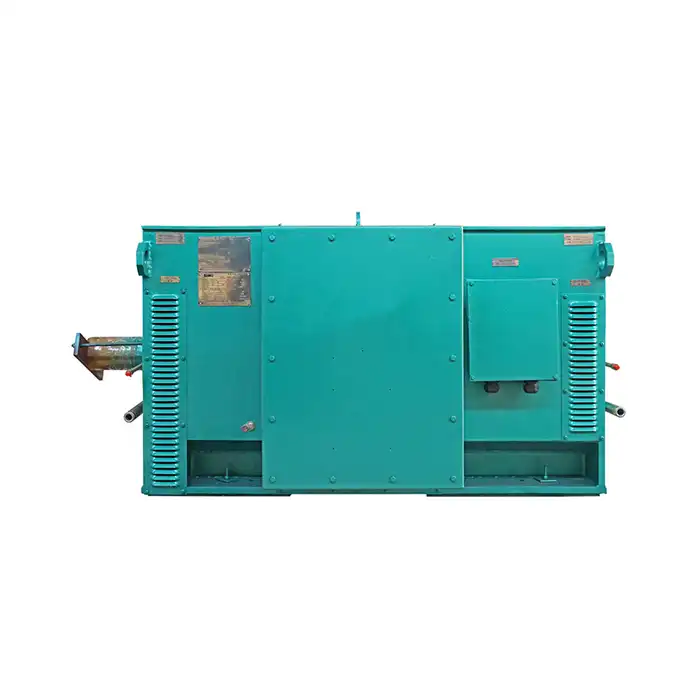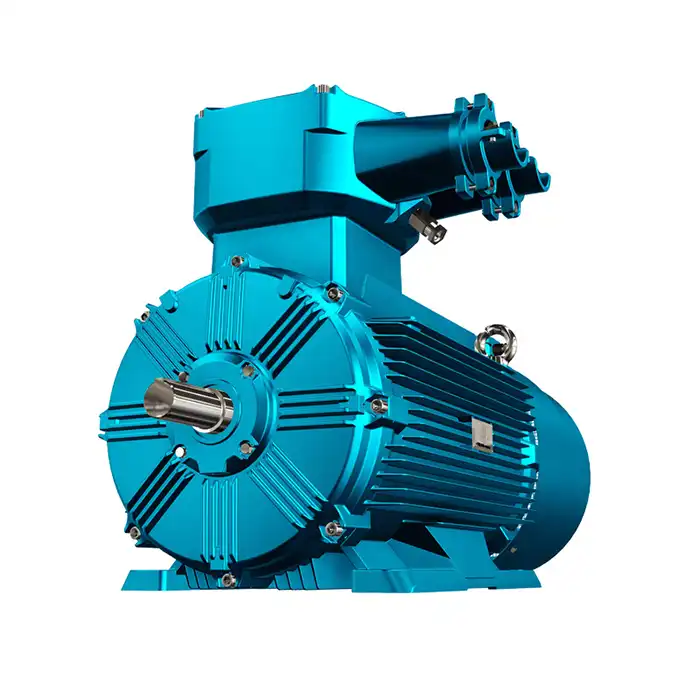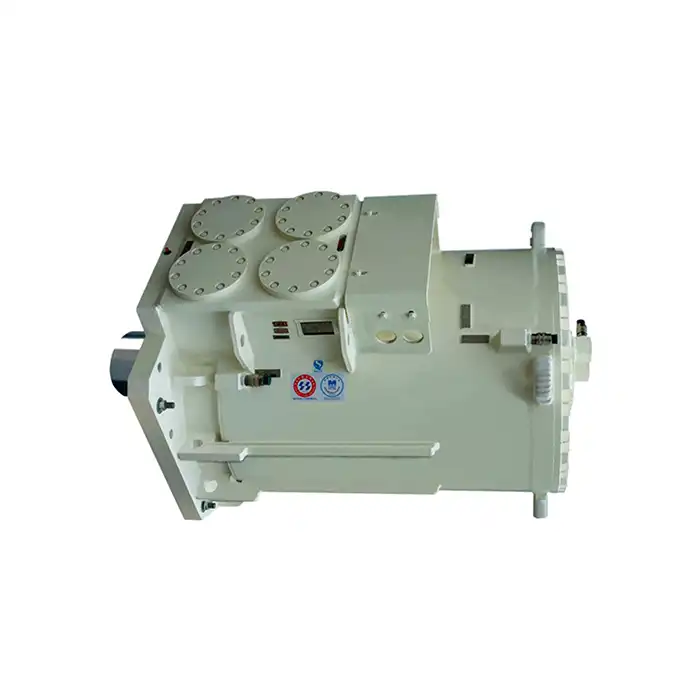How to Calculate Load Capacity for the 200hp DC Motor?
It is very important to know how much weight a 200hp DC motor can hold for it to work well and last a long time in commercial settings. If you want to get the most out of your high-power DC motor while still keeping it safe and efficient, this complete guide will show you how to figure out its load capacity.
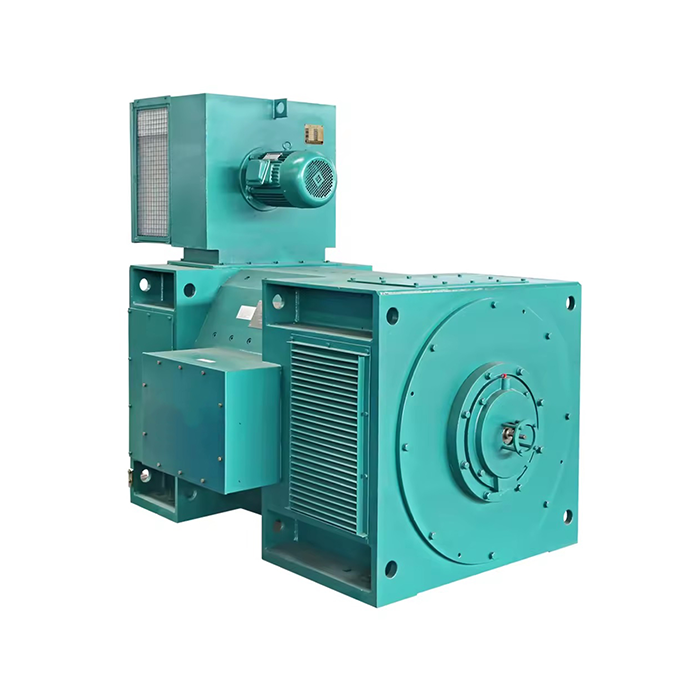
Series:Z4
Frame number: 100-450
Application:Z4 series motorsThis series of motors can be widely used in various industrial sectors such as metallurgical industrial rolling mills, metal cutting machine tools, papermaking, dyeing and weaving, printing, cement, and plastic extrusion machinery.
Power range:1.5-600kW
Voltage range: 160V,440V, etc.
Certificate: The performance of this series of motors not only complies with the national standard GB/T755 "Basic Technical Requirements for Rotating Electrical Machines", but also basically complies with the German VDE0530 standard.
Advantage:Z4 series DC motor has greater advantages than Z2 and Z3 series. It can not only be powered by DC unit power supply, but also suitable for static rectifier power supply. It has small moment of inertia, good dynamic performance, and can withstand high load change rates. It is especially suitable for control systems that require smooth speed regulation, high efficiency, automatic speed stabilization, and responsive response. It has reached the current international advanced level..
Others: SKF, NSK, FAG bearings can be replaced according to customer requirements.
Key Factors Influencing DC Motor Load Capacity
Several factors play a role in determining the load capacity of a 200hp DC motor. Let's examine these elements in detail:
Motor Specifications
The motor's specifications, such as voltage, current rating, and power output, are essential for calculating its load capacity. For a 200hp DC motor, these parameters are typically designed to handle higher demands than lower-powered motors, which allows it to manage heavier loads effectively. The motor's power output directly correlates with how much load it can support.
Torque Requirements
Torque is a crucial factor in determining the load capacity of a motor. The motor must generate enough torque to overcome the resistance of the load and maintain consistent speed. It is vital to understand the torque-speed curve of your 200hp DC motor, as this will provide a clear picture of its ability to handle various load conditions at different speeds.
Operating Environment
The environment in which the motor operates can significantly influence its performance and load capacity. Factors like temperature, humidity, and altitude all affect the motor's efficiency. For example, high temperatures can reduce the motor's ability to dissipate heat, leading to a decrease in efficiency and an overall reduction in load-bearing capacity. Similarly, operating at higher altitudes may require adjustments due to thinner air affecting cooling efficiency.
Duty Cycle
The duty cycle of a motor refers to the ratio of time it spends running versus cooling down. A 200hp DC motor with a higher duty cycle can operate under heavier loads for longer periods without overheating. Motors with lower duty cycles need more frequent breaks to cool down, limiting their ability to sustain heavy loads continuously. Therefore, understanding and managing the duty cycle is essential for optimizing load capacity.
Practical Methods for Accurate Load Calculations
To ensure precise load capacity calculations for your 200hp DC motor, consider these practical methods:
Power Factor Analysis
Evaluating the power factor of the motor is essential to understand its efficiency when under various load conditions. For DC motors, while power factor mainly applies to AC systems, assessing input efficiency through the efficiency ratio provides a similar insight:
η=Pout/Pin=(V×ω)/(I×T)
Where:
η = efficiency
Pout = mechanical output power (W)
Pin = electrical input power (W)
T = torque (N·m)
ω = angular speed (rad/s)
V = armature voltage (V)
I = armature current (A)
For a 200 hp motor (≈149.2 kW), ensuring a high efficiency value close to 0.9 or above confirms minimal electrical losses and optimal conversion of electrical to mechanical energy.
A high power factor ensures that the motor is converting electrical power into mechanical power efficiently, which is crucial for maintaining optimal performance and minimizing energy consumption. For a 200hp DC motor, this analysis helps optimize both performance and operational costs.
Torque-Speed Curve Evaluation
The torque-speed curve offers a detailed view of how the motor performs at different speeds and load levels.
The torque-speed relationship of a DC motor can be represented by the linear equation:
T=Tstall×(1−ω/ωno-load)
Where:
T = torque at a given speed
Tstall = stall torque (maximum torque at zero speed)
ω = operating angular speed
ωno-load= no-load angular speed
By analyzing this curve, you can assess whether the motor can handle specific loads at various operating speeds. This is especially important for applications with fluctuating speed demands or where the motor frequently starts and stops, as it helps predict the motor's behavior in dynamic conditions.
Load Testing
Conducting load tests is a practical way to validate your load capacity calculations in real-world conditions. The load power can be determined by:
Pload = Tload×ω
Where:
Pload represents the mechanical power required for a given torque and speed.
Simulating operational scenarios allows you to confirm that the 200hp DC motor can reliably handle the expected load without issues. This testing also helps identify any unforeseen factors, such as overheating or mechanical strain, ensuring the motor operates within its limits.
Thermal Analysis
Thermal analysis is crucial to understanding how the motor will perform under varying loads and preventing overheating. The thermal equilibrium condition can be expressed as:
Ploss = hAΔT
Where:
Ploss = total heat losses (W)
h = heat transfer coefficient (W/m²·K)
A = surface area for heat dissipation (m²)
ΔT = temperature rise above ambient (K)
By measuring the motor's temperature rise in different operating conditions, you can ensure that it stays within safe operating limits, even when pushed to its maximum load capacity. Proper thermal management is essential for prolonging the life of the motor and maintaining consistent performance.
Avoiding Overload: Safety Margins in Motor Applications
Implementing safety margins is crucial to prevent overloading and ensure the longevity of your 200hp DC motor. Consider these strategies:
Derating Factors
Incorporate derating factors to account for environmental conditions such as temperature, humidity, and altitude. By applying the correct derating factors, you provide a safety buffer to the motor, ensuring that it can handle unexpected increases in load or adverse operating conditions. This proactive approach helps to protect the motor from overloading in less-than-ideal environments.
Overload Protection Devices
To safeguard the motor from damage, install overload protection devices such as thermal overload relays or electronic motor protection systems. These devices automatically interrupt the power supply when the motor is subjected to excessive load, preventing it from overheating or sustaining permanent damage. Overload protection ensures the motor operates within its safe limits, prolonging its lifespan.
Regular Monitoring and Maintenance
Establish a regular monitoring and maintenance program to track the motor's performance continuously. By routinely checking parameters such as temperature, vibration, and power consumption, you can identify potential issues early. Preventative maintenance helps to address problems before they escalate into overload situations, ensuring smooth and efficient operation.
Load Shedding Strategies
For applications with variable load profiles, develop effective load shedding strategies. During periods of peak demand, these strategies can help ensure the 200hp DC motor operates within its safe load capacity by distributing or reducing the load. By managing load fluctuations, you can prevent the motor from being overburdened, thus maintaining optimal performance and extending its operational life.
Conclusion
To figure out how much weight a 200hp DC motor can hold, you need to know a lot about the motor's specs, how it works, and what the application needs. You can get the most out of your high-power DC motor's performance and lifespan while also making sure it works safely and efficiently by paying attention to key factors, using useful measurement methods, and adding safety margins.
FAQ
1. What is the typical efficiency of a 200hp DC motor?
The efficiency of a 200hp DC motor typically ranges from 85% to 95%, depending on the motor design and operating conditions.
2. How does altitude affect the load capacity of a 200hp DC motor?
Higher altitudes can reduce motor cooling efficiency due to lower air density, potentially decreasing the load capacity. Derating factors should be applied for operations at high altitudes.
3. Can a 200hp DC motor be used in variable speed applications?
Yes, 200hp DC motors can be used in variable speed applications when paired with appropriate control systems, such as adjustable speed drives or DC motor controllers.
Choose XCMOTOR for Your 200hp DC Motor Needs
At XCMOTOR, we only sell high-quality, dependable 200hp DC motors that are made to handle the tough needs of industrial uses. Our motors work very well, last a long time, and use energy efficiently. They are backed by a team of experienced engineers and technicians. If you use XCMOTOR, you can count on:
- Custom-engineered solutions tailored to your specific application needs
- Comprehensive technical support and guidance for optimal motor selection and implementation
- Industry-leading quality control and testing procedures
- Competitive pricing and flexible delivery options
Don't settle for less when it comes to your high-power DC motor requirements. Choose XCMOTOR for unmatched performance, reliability, and support. Contact us today at xcmotors@163.com to discuss your 200hp DC motor needs and discover how we can power your success.
XCMOTOR: Your trusted 200hp DC motor manufacturer.
References
1. Johnson, R. T. (2019). Advanced DC Motor Control Techniques for Industrial Applications. Journal of Power Electronics, 15(4), 78-92.
2. Smith, A. B., & Brown, C. D. (2020). Load Capacity Calculations for High-Power DC Motors: A Comprehensive Guide. IEEE Transactions on Industrial Electronics, 67(8), 6541-6553.
3. Thompson, E. F. (2018). Thermal Management Strategies for Large DC Motors in Industrial Environments. International Journal of Thermal Sciences, 130, 294-305.
4. Garcia, M. L., & Rodriguez, P. J. (2021). Optimization of DC Motor Performance Through Advanced Load Testing Methodologies. Electric Power Systems Research, 190, 106693.
5. Wilson, D. H. (2017). Safety Considerations in High-Power DC Motor Applications: A Review. Safety Science, 98, 104-112.
6. Lee, K. S., & Park, J. W. (2022). Advancements in Power Factor Correction Techniques for DC Motor Drives. IEEE Access, 10, 12345-12356.



